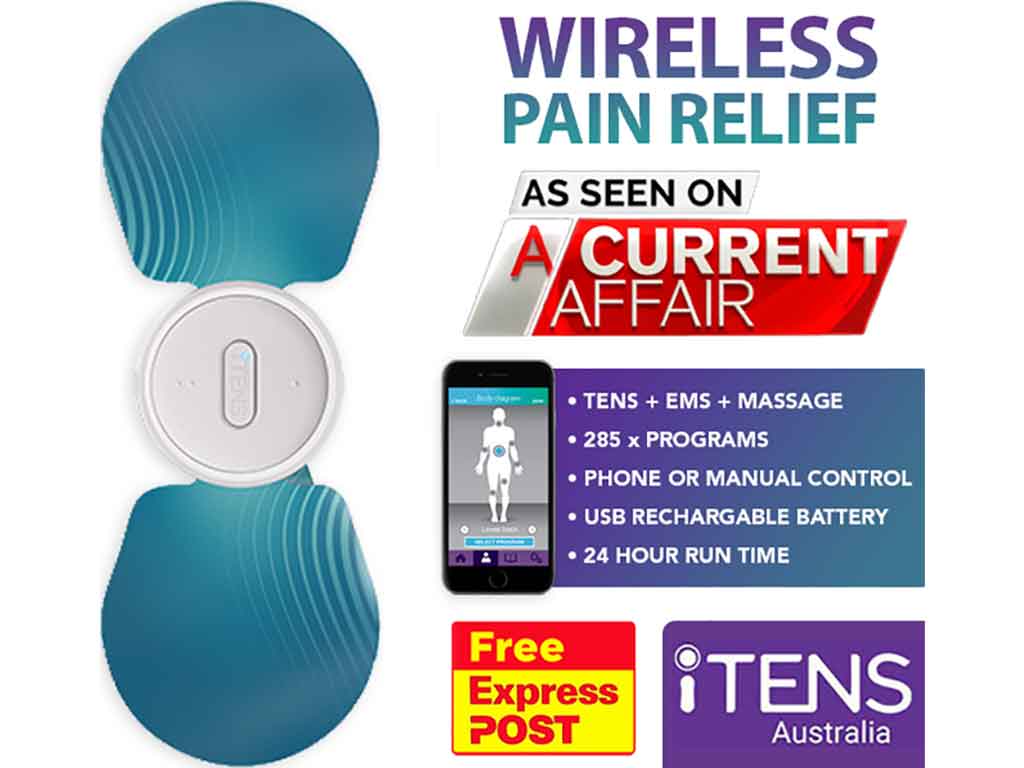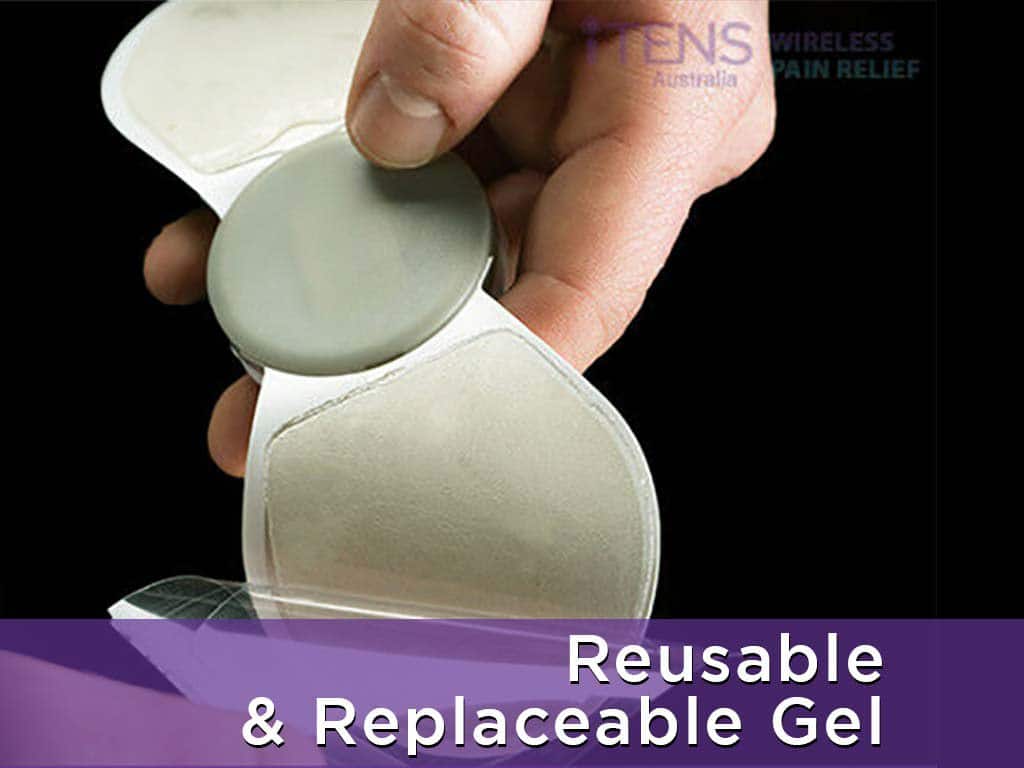
A TENS unit for period pain helps relieve abdominal cramping and other discomfort. Transcutaneous Electrical Nerve Stimulation, or TENS, is a natural and non-invasive therapy for managing pain. The device uses low-voltage electrical currents to stimulate the underlying nerves. This helps to block pain signals and relieve muscle tension. In addition, the treatment involves placing the adhesive pads on the lower abdomen to target the source of the pain.
Period pain, also known as dysmenorrhoea, is a type of pain that some women experience before and during their menstrual cycle. It is caused by uterine contractions that occur when the uterus sheds its lining each month. This causes cramping in the lower abdomen and extends to the back. Moreover, the amount of pain can vary from person to person. In this article, we will explore how a TENS unit works, the proper pad placement, and its benefits.
How a TENS Unit for Period Pain Works
A TENS machine is a portable, battery-operated device that sends electrical impulses through the skin. The device has adjustable settings which allow the individual to choose the frequency and intensity of the electrical pulses. Therefore, the varying stimulation levels elicit different feedback in the nervous system. Mainly, it works in two ways: pain gating and natural opioid release.
A TENS unit for period pain may use high-frequency (50-120 Hz) to block pain signals, known as pain gate control. Certain nerves in the spinal cord act as gate controllers. TENS therapy stimulates these nerves to close, hindering the transmission of pain signals from the pain site to the brain.
The second method is using low-frequency TENS (2-10 Hz) to induce the production of endorphins. Endorphins are natural chemicals with analgesic effects. Thus, they can help with reducing the severity of menstrual pain. Likewise, a TENS machine helps boost blood circulation, reducing inflammation and relaxing tense muscles. Overall, it helps alleviate menstrual cramps without relying on period pain medications.
How to Use the Device
- Start by cleaning and drying the area. Remove any oil, lotion, creams, or dirt, before applying the TENS electrodes.
- Attach the adhesive pads to the skin, depending on the location of the pain. Make sure the pads are securely in place.
- Turn on the TENS unit and adjust the setting. Select the frequency and pulse width according to the recommendations of a practitioner or manual.
- Begin at the lowest intensity setting and gradually increase to a comfortable and tolerable level.
- Set the treatment time to 15-30 minutes.
- After the treatment session, turn off the unit and remove the pads.

Proper Pad Placement of TENS Unit for Period Pain
Using the TENS unit for period pain requires careful pad placement. For menstrual pain, the optimal electrode placement is on either side of the abdomen. The pads should be positioned below the belly button and above the pubic region. Slightly angle the pads inward like a V-shape or diamond pattern. This pad position helps provide maximum stimulation to the relevant nerves and muscles.
In some cases, women may place the electrodes on the lower back to target back or hip pain. Position the electrodes on each side of the spinal column in the lumbar region. Do not place the pads directly on the spine, as it may cause discomfort. Additionally, make sure the pads are one inch apart from each other.
Furthermore, consider the size of the pads. Larger pads are often more effective for covering broader areas of pain, like the abdomen and lower back. Health professionals also advise experimenting with different areas to find effective relief. Users may alter the placement if one area fails to provide relief.
When to Avoid
There are certain cases where it is best to avoid using a TENS machine. Firstly, seek medical advice or guidance for people with underlying medical conditions. This includes individuals with heart problems, epilepsy, and cardiac pacemakers. The electrical stimulation from a TENS unit may interfere with the functioning of implanted devices.
Secondly, avoid using the machine on areas of broken skin and open wounds. While it can be used several times a day, avoid using a TENS device while sleeping. Similarly, do not use the device while driving, operating machinery, or near water. Lastly, discontinue use if adverse reactions occur.

Benefits of Using a TENS Unit for Period Pain
A TENS unit for period pain offers several benefits for pain alleviation. Primarily, it is a non-invasive and drug-free method of pain relief. The stimulation helps to reduce the severity of menstrual cramps without the need for medications. Therefore, women can find an alternative solution to avoid the potential side effects of oral medicines.
Moreover, the programmable settings of the device allow users to customise their treatment. This provides precise control and flexibility over the frequency and intensity of stimulation. It can help individuals to find optimal relief based on their comfort level and avoid systemic side effects. In addition, TENS therapy can help with chronic pelvic pain due to endometriosis or other conditions.
Furthermore, TENS machines are lightweight and portable devices. They are discreet and can be used anywhere. Therefore, individuals can get period pain relief on the go. This enables them to continue with the same physical activity level when they are not on their periods. Overall, the efficiency of the device can help improve the quality of life, especially for women experiencing severe pain every month.
Potential Side Effects
Although TENS is generally safe, there are potential side effects to be aware of. This can include skin irritation due to pad placement or poor-quality adhesive. Likewise, extreme intensity levels may cause dizziness or nausea. Hence, it is vital to adjust the settings to a comfortable level.
It is also common to experience muscle twitching due to the flow of the electrical currents. These side effects easily go away after the treatment. To avoid them, wash the area of electrode placement and use clean pads. It is advisable to monitor the skin condition or body reactions while using the device.
Conclusion
A TENS unit for period pain offers a non-invasive and drug-free pain relief method. It works by delivering electrical impulses to the skin to stimulate the sensory nerves. This causes the body to block pain signals and release endorphins. Furthermore, operating the device is easy, involving pad placement and customisation of settings. The adjustable intensity allows users to personalise the therapy based on their pain levels or treatment needs. Follow the guidelines for effective use.
TENS therapy provides several benefits, including the ability to use it while on the go and avoid the unpleasant side effects of medications. It is safe and cost-effective for managing menstrual cramps or endometriosis pain. Although it is generally safe, users should monitor their bodies for any side effects. Finally, consult a medical professional before using the device if there is an underlying condition. Overall, a TENS machine can help improve the quality of life for women with painful menstruation.







